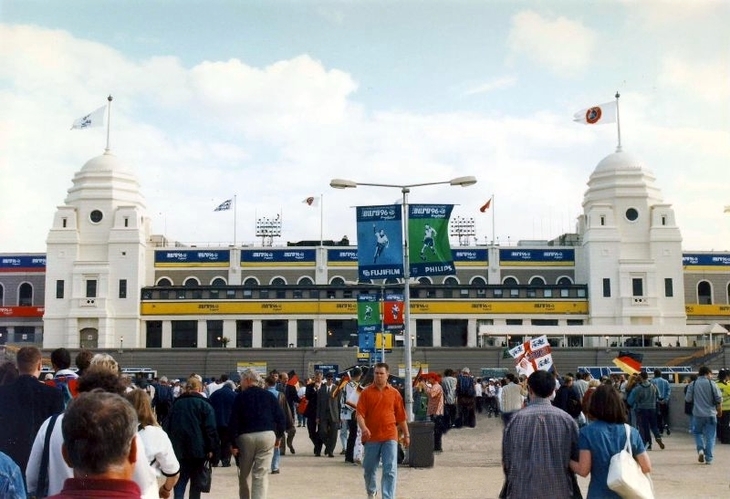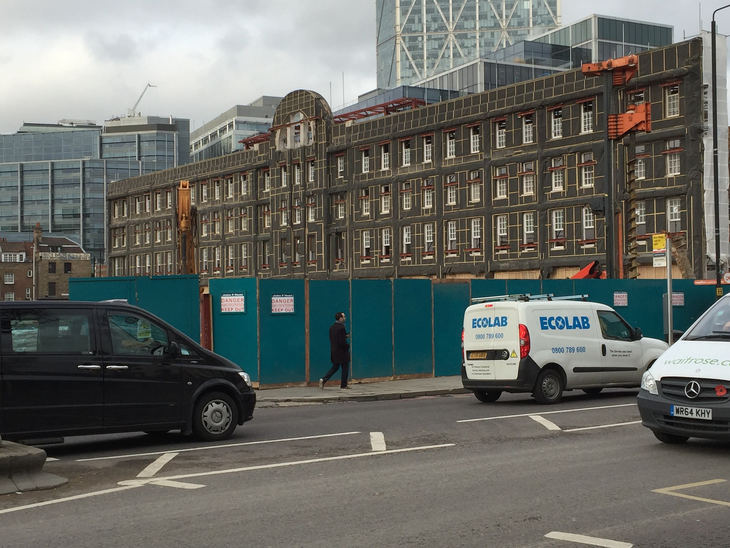For every new building that goes up, something else is usually demolished. Here we look at some of the notable landmarks quashed by wrecking ball during the 21st century.
Wembley Stadium (2003)

Surely the most famous London building to be demolished this century, Wembley Stadium was known throughout the world as both a football and music (Live Aid) venue. Much of the rubble went into building the artificial hills at nearby Northala Fields. Of course a new, and — some would say — more impressive Wembley Stadium was soon built on the empty site.
Mondial House (2006)

This place, once Europe's largest telephone exchange, always reminded us of an early games console. It was utterly out of place on the bank of the Thames, and that is why we admired it. The building had a miniscule lifespan. It was completed in 1978 but only became fully operational in the mid-1980s. It then closed in 2004. Mondial House has been replaced be the decent if unremarkable glass building that contains the Oyster Shed pub and restaurant.
Swiss Centre (2007)

Now M&M's World, this site to the north-west corner of Leicester Square was for 40 years occupied by the brown and concrete Swiss Centre. This was a weird mix of tourist tat shops, cafes, novelty clocks, office space and (unless our memory is playing tricks) a hidden cinema. Can't say we miss it, to be honest. Can't say we're madly in love with its replacement either.
Drapers Gardens (2007)

This 100 metre skyscraper near the Bank of England had the size and style of the more familiar Centre Point. That's because it was designed by the same architect, Richard Seifert. It has since been replaced by a series of unremarkable mid-rise office blocks.
Southwark Towers (2008)

The Shard is well known as the tallest building in London. It replaced Southwark Towers, which was the tallest skyscraper (jointly with Drapers Gardens) ever to be demolished in London. Nobody missed it.
20 Fenchurch Street (2008)

You know the bulky, much-maligned Walkie Talkie building? Its site at 20 Fenchurch Street was previously occupied by another bulky, much-maligned building. The mirrored office tower, notable for its weighty concrete 'lid', was also designed by Richard Seifert.
London Astoria (2009)

The much loved nightclub on Charing Cross Road closed forever in 2009. It was demolished soon after, the most high profile casualty of the Crossrail construction works.
Heygate Estate (2014)

The vast housing estate beside Elephant and Castle was home to some 3,000 people. It took three years to demolish the old concrete blocks. A new estate, playfully dubbed Elephant Park, is now rising as a series of high- and low-rise blocks. The neighbouring Aylesbury Estate is also undergoing radical regeneration.
Carlton Tavern (2015)

This Kilburn pub's story was a sad but familiar one: demolished to make way for flats. It wouldn't have made our list but for one thing: it's since been rebuilt. The pub was flattened without permission from the council, so developers were ordered to rebuild it 'brick by brick'. It should open again sometime in 2018.
Fruit and Wool Exchange (2015)

Spitalfields Life led the (ultimately fruitless) charge to preserve this unique building next to Spitalfields Market. The Fruit and Wool Exchange was constructed in the 1920s as a centre for trade in those commodities. It is perhaps more famous for serving as a second world war bomb shelter. The bulk of the building has now been bulldozed, and a major office complex has risen from the rubble. Only the front facade remains. Less lamented is the City of London car park round the back, which has also gone. This was built on the site of the last and most brutal of the 'canonical' Jack the Ripper murders. The law firm who move into the new offices can look forward to an endless tide of tour groups stopping outside their building.
Earls Court Exhibition Centre (2016)

The vast halls of pleasure closed in 2014 to make way for a controversial housing scheme. Just about every Londoner has at least one fond memory here.
The Stump (2016)

What might have been London's most eye-catching skyscraper never got higher than the ninth floor. The Pinnacle (22 Bishopsgate) began construction in 2008, but halted a couple of years later due to financial wrangling. The part-built core hung around for half a decade, earning the sobriquet 'The Stump'. It was finally swept away in 2016. A skyscraper so bland that nobody has yet thought of a decent nickname is now rising in its place.
Battersea Power Station Chimneys (2017)

Before the current redevelopment began in 2015, the Giles Gilbert Scott landmark had languished as a crumbling wreck for decades. Its four distinctive chimneys were declared unsound, demolished and rebuilt from scratch. 680 tonnes of concrete were required in a reconstruction that completed in 2017.
These are by no means the only significant buildings demolished in the 21st century. Please nominate your own choices in the comments.




